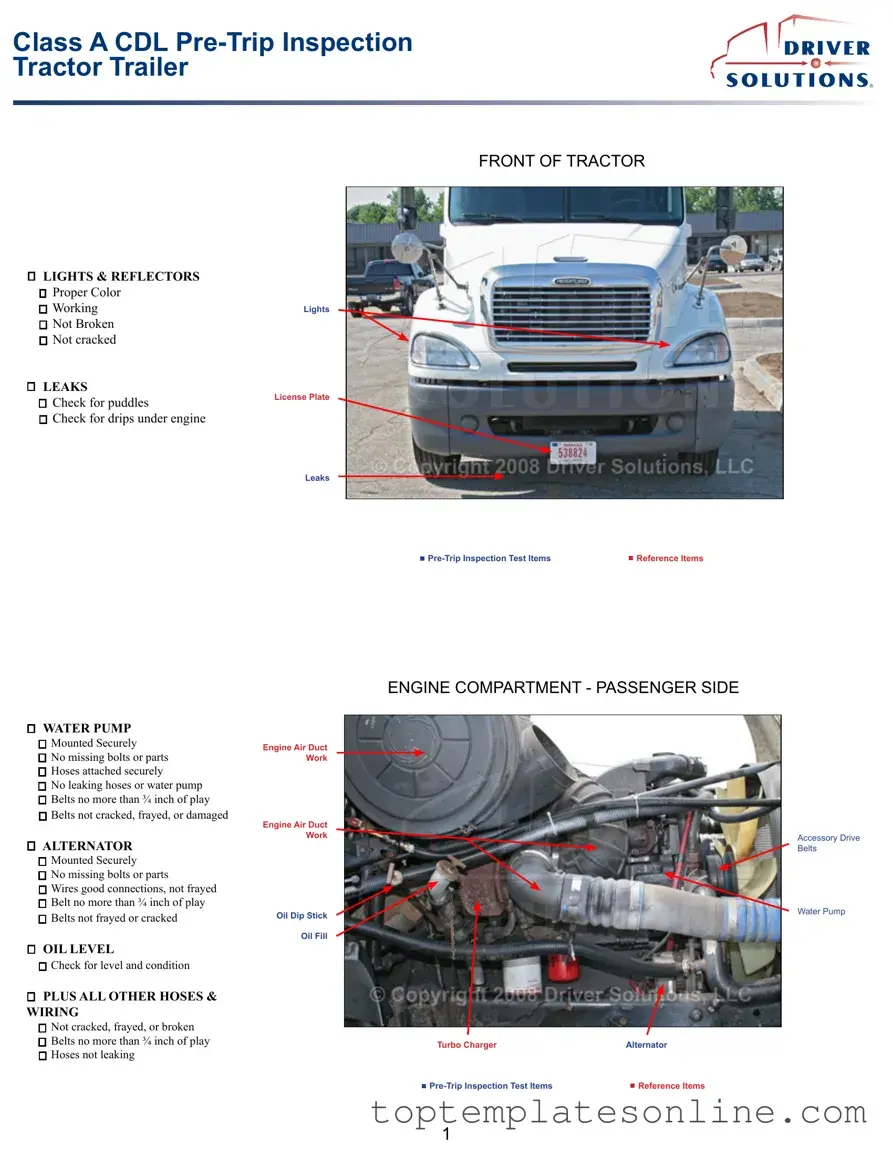Before hitting the road, ensuring that a vehicle is in optimal condition is essential for safety and efficiency. The Pre Trip Inspection Checklist serves as a crucial tool for drivers and fleet managers alike, guiding them through a comprehensive evaluation of the vehicle's key components. This checklist typically includes sections for examining the engine, brakes, tires, lights, and safety equipment, among others. Each category prompts the inspector to assess various elements, such as fluid levels, tire pressure, and the functionality of lights and signals. By systematically addressing these areas, the checklist not only helps in identifying potential issues before they escalate but also promotes adherence to safety regulations. Additionally, completing this form fosters accountability, as it requires drivers to document their findings and take appropriate action if necessary. Ultimately, the Pre Trip Inspection Checklist is more than just a form; it is a vital practice that contributes to the overall safety of all road users.
